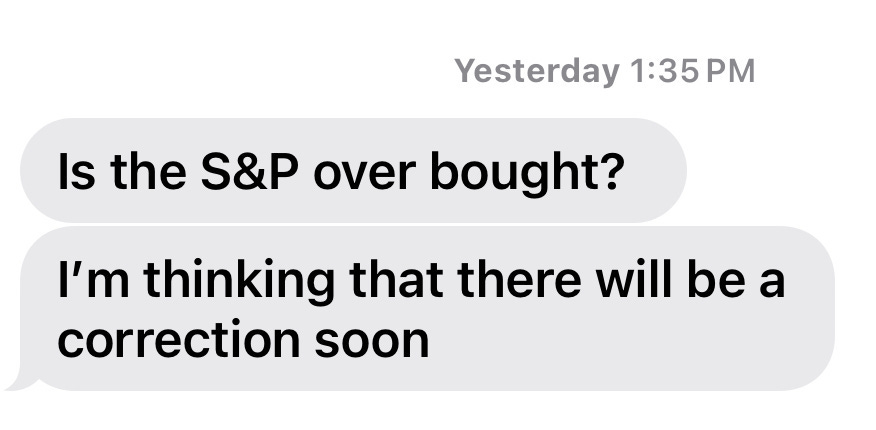Put Your Eggs in This "Basket" — And Win
These strategies and these stocks will add Wealth Builder muscle ...
“Put all your eggs in one basket — and watch that basket.” — Andrew Carnegie.
In the Pittsburgh region, Andrew Carnegie is a really big deal. Carnegie is to the city’s historic and philanthropic underpinnings what Willie Stargell and Roberto Clemente are to its heritage in baseball, Franco Harris and Terry Bradshaw to football and Mario Lemieux and Sidney Crosby to hockey.
Here’s where the Carnegie story gets interesting.
Along with industrialist peers like John D. Rockefeller, Cornelius Vanderbilt, and Jay Gould, Carnegie was one of the “Robber Barons” whose ruthless strategies, exploitation of the working man and wealth-building successes helped define what’s now referred to as the “Gilded Age.”
But Carnegie was a living, breathing paradox: In the last two decades of his life, he gave away an estimated 90% of his fortune (roughly $350 million — or more than $13 billion in today’s money) to fund universities, libraries and other charitable foundations.
Walk about Pittsburgh and you can actually see it, with the Carnegie Library, Carnegie Museums of Pittsburgh and Carnegie Institute of Technology (now Carnegie Mellon).
More than 100 years after his death in 1919, people are still benefitting from his philanthropy.
Carnegie Tech is where William Patalon Jr. — the son of a Lehigh Valley Railroad machinist and the valedictorian of a tiny high school in Duryea, Pa. — went to study physics.
And while there in Pittsburgh, William went on a blind date with a pretty, petite, redheaded nursing student named Kathleen Rose Herron. They fell in love, got married and had three kids, including future reporter and stock picker William Patalon III — the author of the story you’re reading right now.
That’s right … me.
Really brings those billions in giving down to a personal level … doesn’t it?
Philanthropy lives through the decades. And so does wisdom.
Like that “put all your eggs in one basket – and watch the basket” maxim …
Carnegie reportedly said this during a June 23, 1885 address to students of Pittsburgh’s Curry Commercial College (and contemporaneous press reports back that up).
“The concerns which fail are those which have scattered their capital, which means that they have scattered their brains also,” Carnegie said. “They have investments in this, or that, or the other, here, there and everywhere. Don’t put all your eggs in one basket is all wrong. I tell you: Put all your eggs in one basket, and then watch that basket. Look round you and take notice; men who do that do not often fail. It is easy to watch and carry the one basket. It is trying to carry too many baskets that breaks most eggs in this country. He who carries three baskets must put one on his head, which is apt to tumble and trip him up. One fault of the American businessman is lack of concentration.”
It's definitely Contrarian advice (which, as the co-author of a contrarian-investing book, goes right to my heart). But folks like Mark Twain and, later, Peter Lynch, doubled down on this same advice.
So why am I sharing this? Simple. For investors, this bit of advice is always relevant.
But it’s especially relevant now.
Today I’ll show you why. I’ll also show you how to do this, with two stocks to research to help you get started.
THE STOCK PICKER’S MARKET COMETH
Following along with Carnegie’s basket thesis, we believe the best approach is to identify the most-powerful storylines, and then drill down to find the biggest beneficiaries — the best companies, and the best stocks.
Given the possible “what’s next” scenarios for the key indices, stock picking is the approach to take.
The S&P 500 gained 26.29% in 2023 and another 25.02% last year — and we’re talking percentage increases, which excludes dividends.
The last time that index posted three straight years of double-digit gains was in the late ‘90s:
1997: 33.36%
1998: 28.58%
1999: 21.04%
That’s a cumulative gain of 87.98% and a compounded gain of 107.86%.
After such a hot run – and a bursting of the Dot-Com Bubble – U.S. stocks took it on the chin, with 9.1% drop in 2000 and a 22.1% decline in 2001. The cumulative “return” for the five years that followed that three-year surge was negative 23.24% and the compounded loss was 24.2%.
Why the backstory?
There’s deep disagreement about “what comes next” for stocks.
For instance, Oppenheimer is super bullish: It predicts the S&P 500 will end 2025 at 7,100, up about 20% from where it started. Famed author and Wharton Business School icon Jeremy Siegel sees a muted market this year, with stocks advancing from zero percent to 10% — with the potential for a 10% correction.
T. Rowe Price Strategist David Giroux looked at where stocks will trade in 2030. His five-year “total-return” estimate for the S&P 500 is less than 5% a year. (And “total return” includes dividends).
Yikes.
For folks who rely on the “set-it-and-forget-it” approach offered by index funds, that’s a bleak outlook.
And the similarities between the Internet Revolution and the Artificial Intelligence Era — while not perfect — give some credence to the potential for several years of famine after this run of stock-market abundance. Indeed, we talked about those similarities — and the potential for some up-and-down markets on the way to long-term AI-driven bullishness — in our Quarterly Roundtable for SPC Premium subscribers just this week.
Add in the growing list of variables in the “uncertainty” category, and I believe the risk is higher than usual.
The Takeaway: In the face of uncertainty, the ebb-and-flow (but long-term bullishness) of the AI-driven paradigm shift, picking a few great stocks (as opposed to the over-diversification of indexing), is our chosen Wealth Builder strategy. Put a few individual stocks in that basket — and watch it. The AI storyline is strong. And one stock to look at is Alphabet Inc. (GOOGL), which has advanced technology, is a Contrarian play because the Feds are making noise about a monopoly breakup — and is essentially a “call option” on quantum computing because of its new Willow quantum chip.
ACCUMULATE — BUT DON’T “TIME” OR “TRADE”
I told you folks the start of this story earlier this year; now I can finish it.
In late May, my longtime friend Jake sent me this text. He was feeling squeamish about the market, and was planning to “take money off the table” — pulling it out of stocks and putting it into bonds — figuring he could “get back in” when “things felt better.”
But as I pointed out, he had no actual plan.
I ran into Jake a few weeks ago: He stayed in stocks; and is glad he did — since the S&P 500 rose another 13% from there.
“Timing the market” — going “all in” and “all out” at different times — is a loser proposition for retail investors. Even with the best intentions, the moves are almost never based on a system — and are almost always driven by emotion.
And the explosion in options speculation — a kind of “DraftKings Betting Mentality” that’s even infected retail investors — is even worse. Avoid speculative options trading at all costs.
The Takeaway: I have a different approach — called the “Accumulate” strategy.
Pick those few great “eggs” that you want to own for a long time and watch them carefully. Indeed, establish a “foundational” (starter) position in each; and look to add to your stake on pullbacks. And if you want, take advantage of the “Options-Trading Pandemic” by “taking the other side of the trade” … sort of. Check out CBOE Global Markets Inc. (CBOE), an operator of financial exchanges, which includes the Chicago Board Options Exchange. It provides data analytics, trading tools and the technology for trading options, futures and other financial products. And it’s one of the largest clearinghouses for options trading. As such, you’ll win as trading grows — keeping things simple with your easy-to-watch basket.
FINAL THOUGHTS
I like to keep things simple. And part of that is making things easy to understand. That’s one powerful feature of the Stock Picker’s Corner (SPC) “storyline approach.” Stories are easy to grasp, easy to follow and easy to explain. Follow a few stories, follow a few stocks — and keep them in that “basket” that’s easy to watch.
Legendary fund manager Peter Lynch said that corporate execs should embrace the same approach to running their companies. He decried the trend toward big, complex “conglomerates,” saying diversification made companies hard to manage and hard to understand — for insiders and investors alike.
In his book “One Up on Wall Street,” he coined a term "Diworsification." And he said it led to lackluster financial performance and poor share-price returns.
His message: Avoid overcomplications … and stick with what you know.
I couldn’t agree more.
See you next time;






